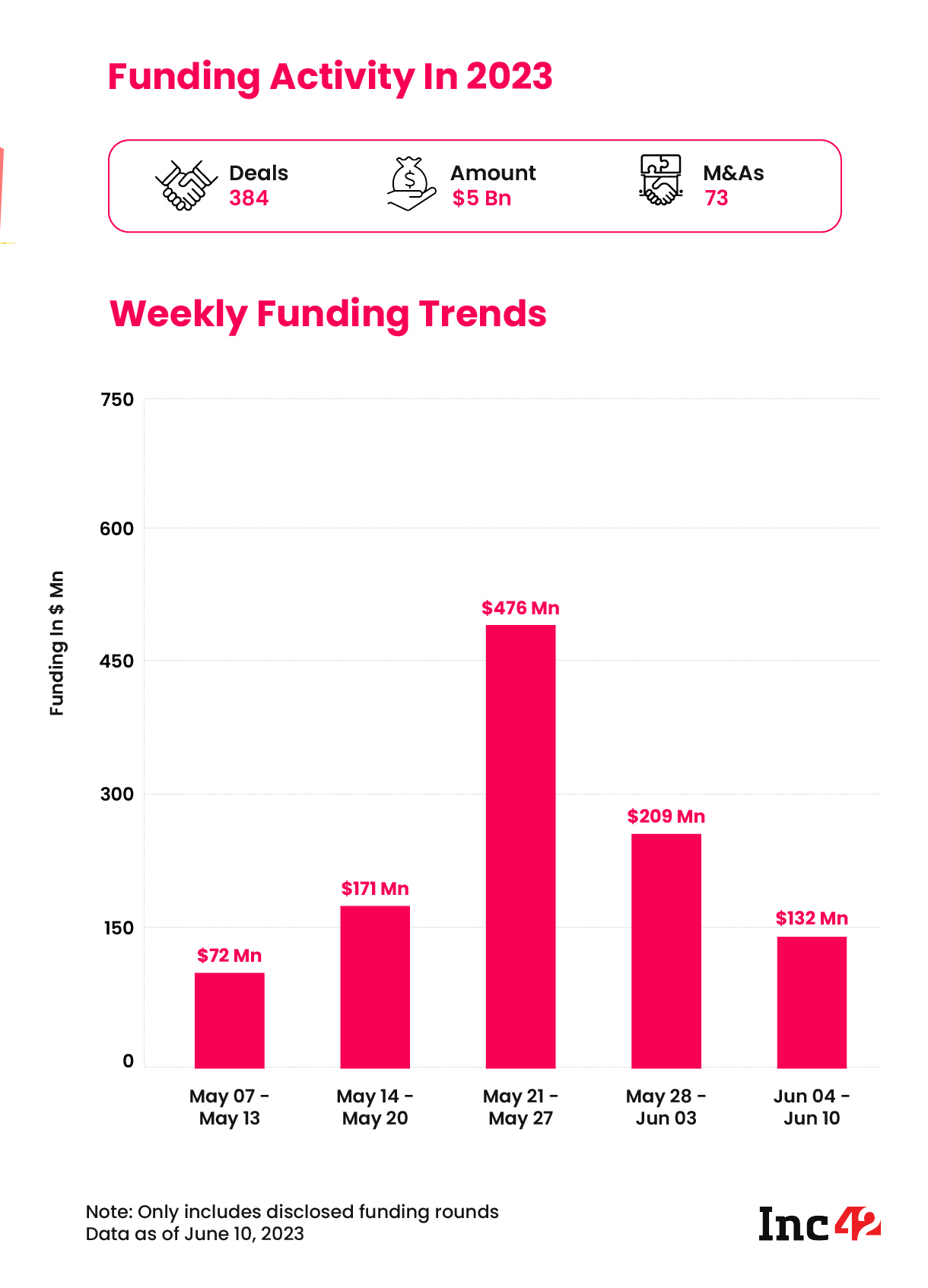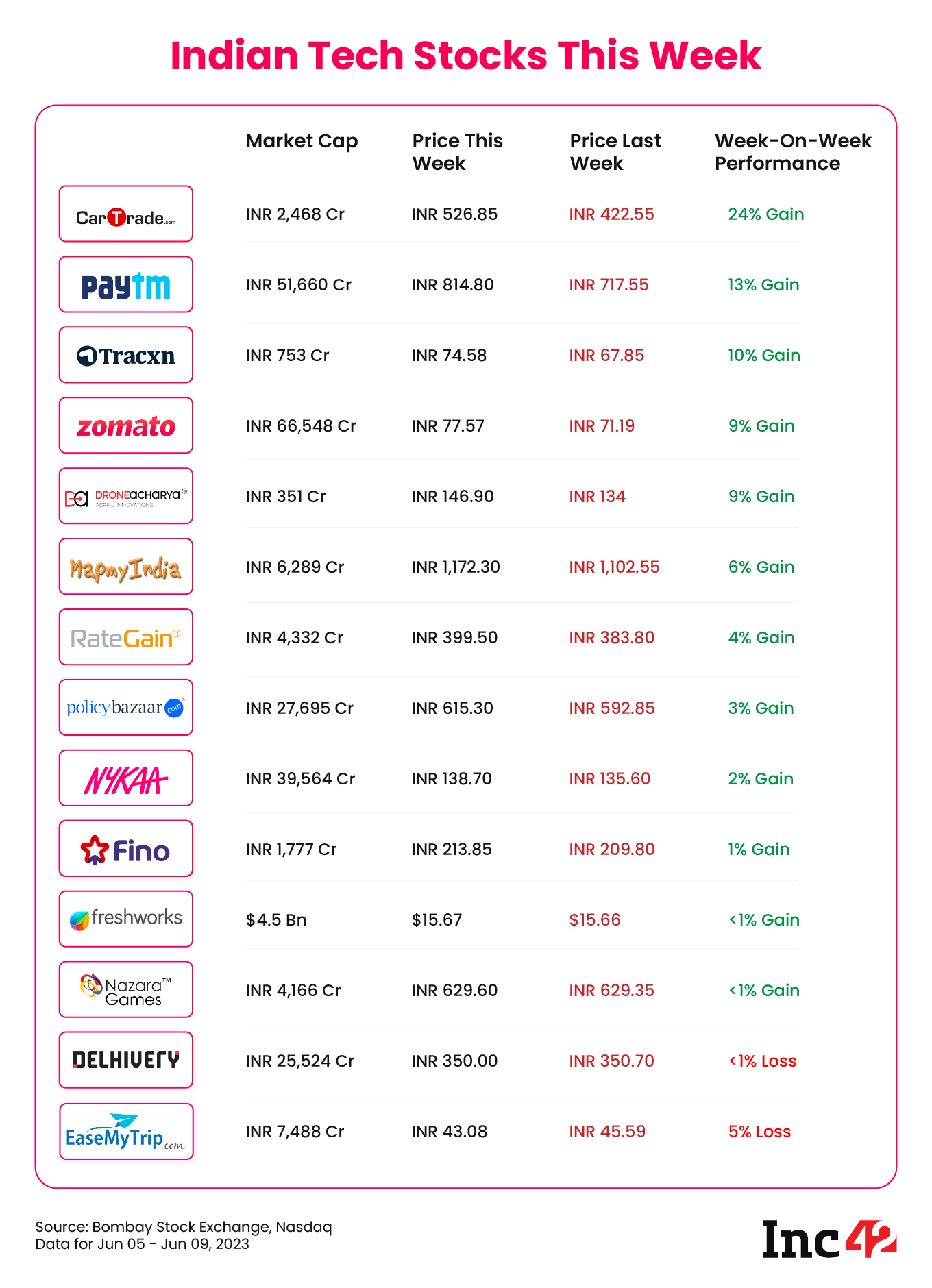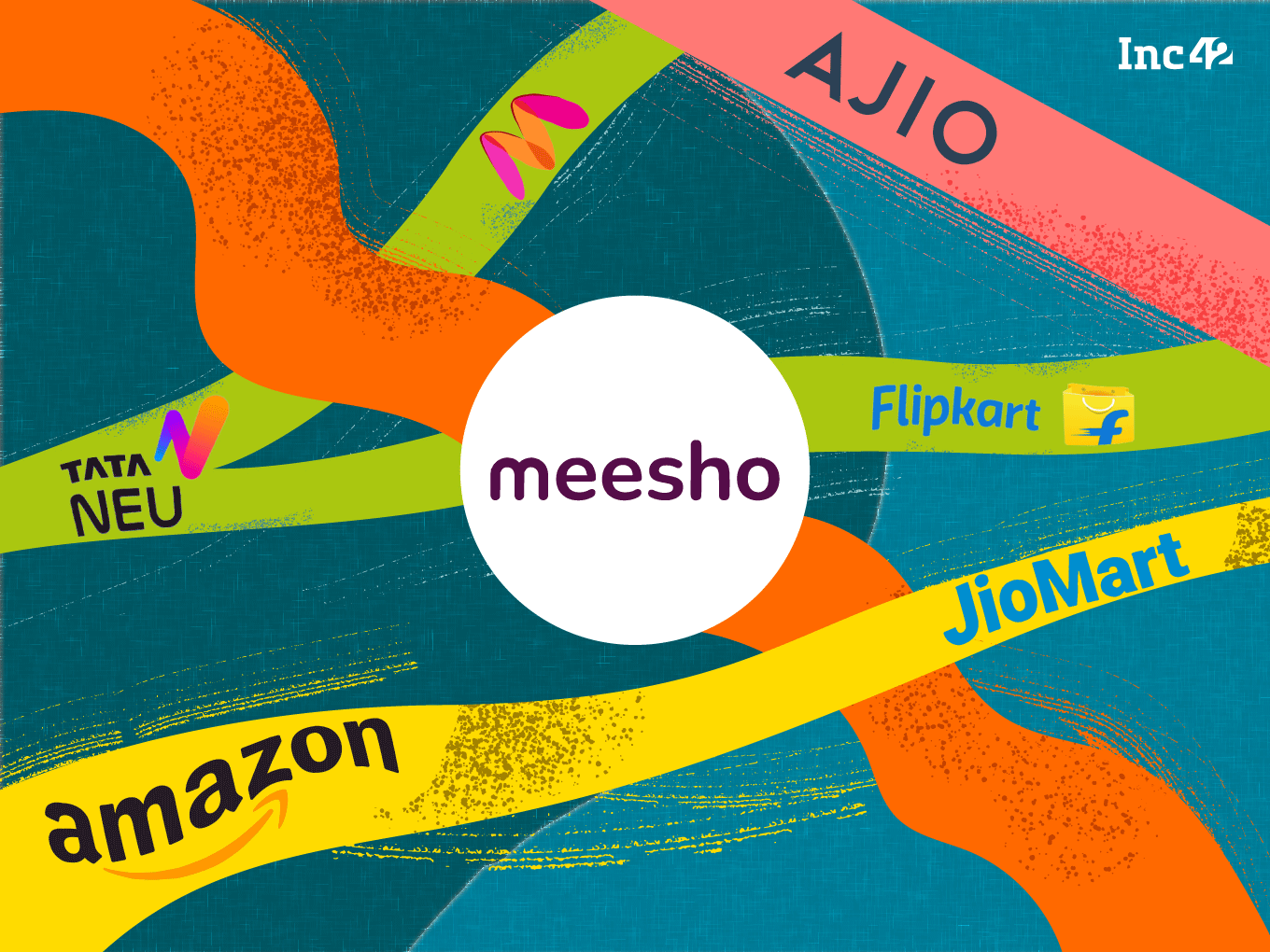Meesho is looking to end the profitability rut in ecommerce. Can it get there?
Many have tried but none have yet cracked it. Ecommerce — particularly the marketplace model — is still not within the reach of profitability. Meesho
But getting to this target will not be easy. The likes of Flipkart, Amazon, Reliance Jio, Tata and others have not managed it, so how does Meesho hope to get there? In recent days, a bullish Meesho has unveiled a new brand identity and claimed to have achieved 500 Mn downloads for its app. But there are other developments afoot that are more noteworthy.
The startup’s focus is also shifting to increasing its take rate and boosting the average cart size for its users, according to sources. Can the SoftBank-backed unicorn pull this off?
But before we delve into that, here are big stories from our newsroom this week:
- ZestMoney’s Downfall: ZestMoney’s success was once synonymous with India’s tryst with the BNPL market. Our in-depth story on what went so wrong
- GIFT City’s Promise: Seen as India’s answer to the global financial hubs of Singapore and Mauritius, can GIFT City become the go-to destination for startups and investors?
- BYJU’S Loan Conundrum: BYJU’S has entered a bitter legal battle with its lenders even amid this week’s announcement of an IPO for Aakash next year
Where Meesho’s Marketplace Stands
When Meesho finally doubled down on the marketplace model last year, we questioned whether its no-commission model can be sustained for long.
From a reseller platform, social commerce, B2B commerce, live commerce, and a brief fling with grocery delivery, Meesho transitioned to the marketplace model last year, but it was eschewing all seller commissions. Instead, it banked on ad revenue from sellers to push towards profitability.
This model has its benefits; it attracts a lot of sellers and therefore produces the kind of network effect and volumes that were needed to sustain the business.
But with no commissions, Meesho gets very little for itself from any transaction in the form of fulfilment charges. This fee charged for order fulfilment is further shared with logistics partners, leaving the company with very little margin.
The model works when there is huge order volume, such that Meesho would get the lion’s share of the fulfilment fee that’s being shared with logistics players, since bulk deliveries typically have a lower cost per unit shipped. But big volumes would also generate competition in the marketplace to drive Meesho’s ad revenue.
According to a Jefferies report, the Vidit Aatrey-led company is said to have reached the milestone of 4.5 Bn in GMV in 2022. Monthly transacting users were reported to be on par with incumbents, with the company said to be nearing zero cash burn.
The report also claimed that Meesho’s average monthly active user count is roughly 55% of Flipkart and Amazon India. The next revenue push will come through getting users to spend more per order on Meesho, according to sources who are aware of the internal revenue roadmap.
The problem is that Meesho’s niche is competitively priced and unbranded assortment that targets value-conscious customers. Essentially it has to convert these users into a slightly premium bucket. The recent brand identity revamp and new ads are linked to this effort.
The ad, posted by founder Aatrey on Twitter, shows a focus on beauty and fashion as categories, and these are generally considered to be premium categories with a longtail seller base. Admittedly, the ad also spotlights home improvement and kitchen products, which are currently Meesho’s strongest categories, according to the source quoted above.
In this context — i.e. the focus on high-value categories — Meesho has to also attract larger sellers who have the marketing budgets to spend on ads on its platform. The 500 Mn downloads announcement would have certainly caught their attention, but how many users Meesho has on a monthly basis?
Besides, in the age of profits, talk about downloads is simply vanity metrics. It is as top line as it comes and lifetime downloads have little bearing on actual unit economics or profits. This also does not give a true picture of the actual users Meesho can target, since the number of online shoppers is far lower.
According to Bain & Company’s e-Conomy India 2023 report, 220 Mn Indians transacted and shopped online in 2022. So how many of these does Meesho have?
But Are Sellers On Board?
Despite the no-commission model, sellers are not exactly chuffed with some of the other policies enforced by Meesho in recent months. In early 2023, Meesho introduced new barcodes and video verification of the product packaging for returns, which complicated the process and extended the settlement time to seven days after receiving the returns.
Sellers protested over the change by refusing to process orders, but it’s not clear whether this resulted in any attrition for Meesho. Then in April, an Ahmedabad-based seller reportedly sent a legal notice to the company for ‘unfair trade practices’ in relation to its return policy, which the seller claimed led to avoidable losses.
In ecommerce deliveries, return logistics form a significant part of the total logistics costs. In general, reverse logistics (returns to sellers) is more expensive than forward logistics (shipping to customers).
Returns were a big problem area for Meesho according to the business manager quoted above, who claimed that the new policy has definitely contributed to lower fake returns. These gains are said to be minor though, given the millions in losses for Meesho in FY22.
In FY22, Bengaluru-based Meesho reported a net loss of INR 3,247.8 Cr during the period under review, up 550% from INR 498.6 Cr reported in the previous fiscal year.
While the startup saw its total expenses soar to INR 6,607.2 Cr in FY22, up more than 400%, its logistics and fulfilment expenses stood contributed 43% to the startup’s total expenditure.
Can Meesho Hit Profitability?
Since last year, Meesho has laid off over 400 employees with the latest cutback coming in May. CEO Vidit Aatrey’s email to employees post the layoffs at the time said, “While our cash reserves buffer us well for these harsh circumstances, we need to stay highly prudent on the cost front.”
He also said the company made mistakes in the over-hiring. Today, Meesho has close to 1,300 employees, according to another source.
Whether the push towards profitability includes further layoffs is unclear at the moment. But something has to give — either the costs or the revenue.
Despite claims of Meesho touching EBITDA breakeven in 2023, scaling up revenue will require more investments, particularly given the ecommerce marketplace competition.
Marketing costs are expected to be high if the company is looking to take on the Flipkarts, Amazons and JioMarts of the world who have regular ad blitzes on TV and online.
Given this, Meesho will also need to diversify its revenue from sellers beyond ads. Ads have proven to be an unstable revenue stream in FY23 thanks to major marketing budget cuts by online sellers.
There were also reports last year that Meesho is investing to build its own logistics platform/product to handle deliveries, which would allow it to take the full fulfilment fee. The company has also joined ONDC to boost hyperlocal presence.
Flipkart and Amazon have the luxury of a diverse business model to actually cut their commissions to compete with Meesho and take a bigger share of the seller base. Reports in recent months suggest Amazon is has lowered its base commission for sellers by 10% to compete with the long-tail seller market that Meesho has dominated.
Meesho claimed an ARR of $100 Mn (as of August 2022), but its financials will show the true picture of this dependency on ad revenue. Ad revenue is just 3% of Flipkart’s total revenue of INR 43,357 Cr for FY21 and Amazon India earned $320 Mn (INR 2,554 Cr) from its marketplace business on a total revenue of INR 16,200 Cr.
Pitching Up Against Retail, Global Giants
Despite multiple revenue streams, Amazon and Flipkart have not eked out profits from their ecommerce business. They are contending with giant competition in the form of JioMart and TataNeu, which will also compete with Meesho. The likes of Swiggy and Zomato are also creeping into ecommerce territory by leveraging their dark store network.
Some investors have also marked down Meesho’s valuation in recent months, which is an exercise determined by factors such as competition. Fidelity Investments has marked down the fair value of ecommerce unicorn Meesho by 9.7% to $4 Bn. The valuation is just under the $4.5 Bn GMV mark that Meesho hit in 2022, as claimed by Jefferies.
JioMart’s ad blitz and the backing of the Reliance conglomerate has made it a huge contender in this space. It will be interesting to see how many users Jio has managed to reach and the revenue growth in its first full year of operations.
The competitive picture is definitely getting complicated for Meesho as it looks to carry forward the gains of the first full year as a dedicated marketplace.
Despite positive noises, the fact is that Meesho’s move to a marketplace has pushed it closer to some heavyweight competition that did not have Meesho on its radar earlier. How will the competition react and will Meesho have enough in its tank to take them on and reach profits?
Sunday Roundup: Startup Funding, Tech Stocks & More

Funding On Slow Lane: Startup funding remains muted as we close in on the second half of the year. Between June 5 and June 10, the Indian startups collectively raised $132 Mn across 19 deals
OpenAI Eyeing Indian Startups: OpenAI cofounder Sam Altman revealed that the company has had internal discussions about the opportunity to invest in Indian startups

Tech Stocks Rally: Paytm jumped over 13% week-on-week after getting an upgrade from Bank of America, while Zomato also saw a near-10% gain compared to last week
Sequoia’s Peak XV Innings: Along with a rebranding to Peak XV Partners, Sequoia has also spun off its India investment entity from its US and Chinese counterparts. Here’s why
































 Ad-lite browsing experience
Ad-lite browsing experience